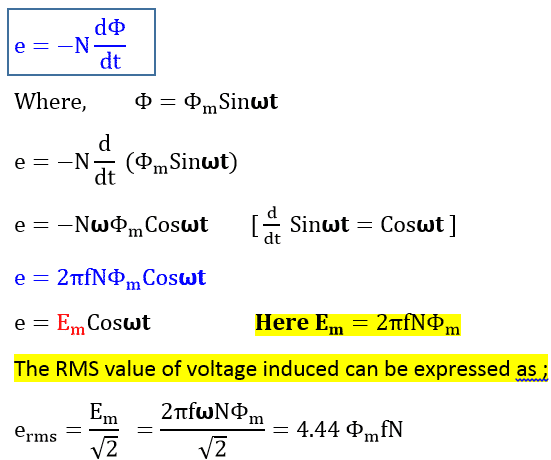We can operate a 60 Hz designed transformer at 50 Hz. However, the other performance parameters need to check. The flux in the transformer core depends on the voltage and frequency of the supply voltage. First, let us see how the flux is related to voltage & frequency.

From the above equation, the flux is proportional to a volt per hertz and inversely proportional to the frequency.
Thus, if we keep the V/f ratio constant, the flux remains constant. We assume transformer rated voltage 400 volts, and frequency 50 Hz.
The flux in the transformer
Φ∝V/f = 400/50 = 8
Now, if we operate the transformer at 60 Hz, keeping the voltage constant(400Volts), then the flux in the transformer is.
Φ∝V/f = 400/60 = 6.66
The flux in the transformer reduces with the reduction of frequency. The transformer can not be operated above its rated flux density because it causes heating. Thus, it is possible to operate the transformer at a lower flux density.
However, we need to look at another effect of flux reduction in the transformer. The secondary voltage also decreases with the decrease of flux.
The flux reduction of about 16.75% cause voltage to reduce by 16.75%. If the output secondary voltage is within the operating range of the equipment to be connected to the transformer, then we can operate the 50 Hz transformer at 60 Hz.
Practically, with an increase in frequency, the voltage needs to increase in the same proportion of frequency increase in order to maintain the constant secondary voltage.
Lets summarize what we discussed.
- The flux reduces with increase in frequency if voltage remains the same
- The secondary voltage changes in the same proportion with increase/decrease of frequency.
- If we keep both voltage & frequency unchanged or increase/decrease in the same ratio, the flux in the transformer remains constant.
Read Next: